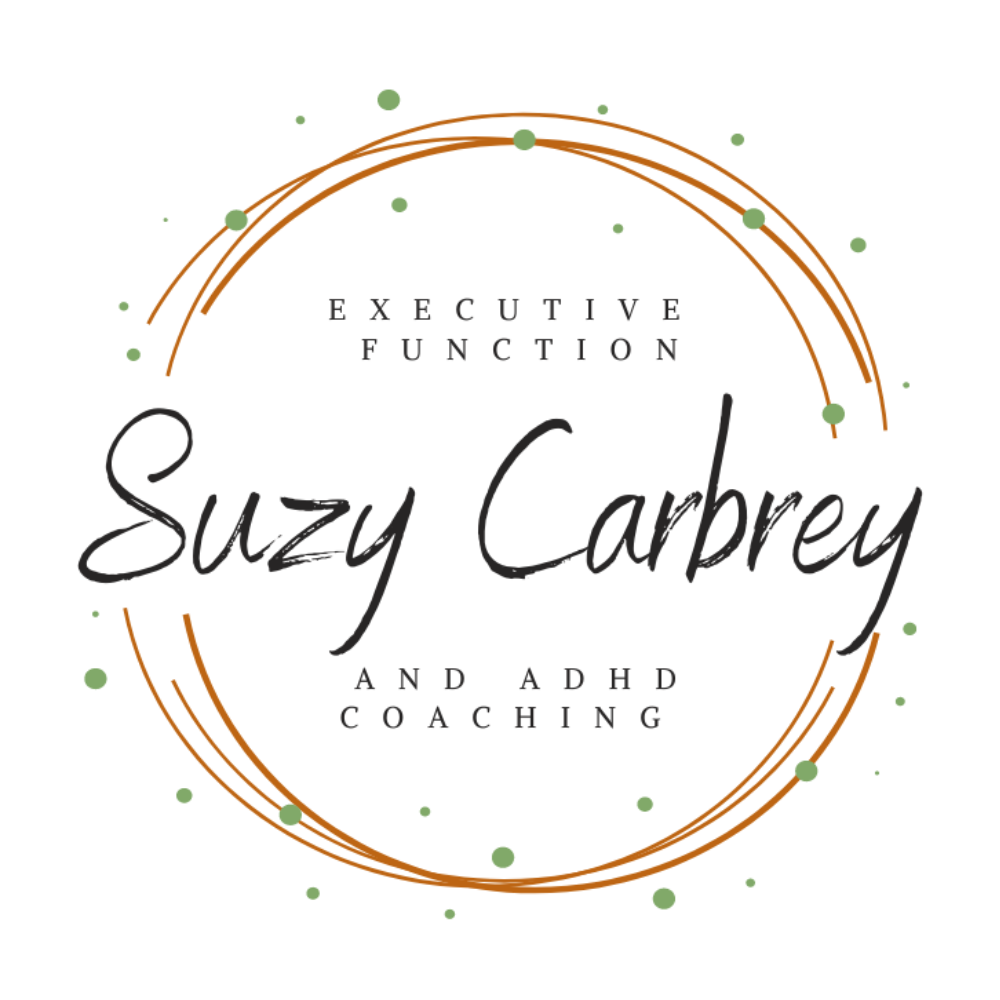Written by Suzy Carbrey
In our fast-paced, always-on culture, many people wrestle with feelings of inadequacy when they’re not consistently productive. The societal narrative often equates busyness with worth, leaving little room for the quieter, slower moments of life. Yet, just as nature operates in cycles, so do we. Productivity is not a straight line—it’s an orbit.
Let’s explore this through a metaphor: you are the moon, and your goals, projects, and responsibilities are your planet. Like the moon, you move through an elliptical orbit. At times, you are close to your planet, hustling hard, accomplishing tasks, and making significant strides. Other times, you are at the outermost part of the orbit, where progress feels slow, energy wanes, and rest beckons.
This slower phase is not failure; it’s essential. By honoring both the productive and restorative parts of your orbit, you can achieve sustainable success without sacrificing your well-being.
Understanding the Orbit: A Natural Rhythm
The moon’s elliptical orbit is a perfect metaphor for human energy and productivity. When you’re close to your planet—your goals—you feel energized, focused, and capable of taking on big challenges. But the further you move away, the more your pace slows, and the more you might feel disconnected from progress.
The key is recognizing that this rhythm is natural and necessary. Just as the moon’s gravitational relationship with the Earth is cyclical and predictable, so too is your relationship with your energy and focus.

Phase One: Close to the Planet – High Productivity
When you’re in this phase, you feel “in the zone.” You’re tackling tasks with momentum, solving problems, and achieving significant progress. During these times, it can feel like nothing can stop you.
This phase is essential for accomplishing big goals and moving forward in life. However, it’s also taxing. The mental, emotional, and physical energy required to sustain this level of effort can’t last forever.
Tips for Maximizing Productivity in this Phase:
- Focus on Priorities:
Use tools like the Eisenhower Matrix or a simple to-do list to identify what truly matters. This ensures your energy is directed toward meaningful accomplishments. - Leverage Momentum:
When you feel motivated, ride that wave. Work on projects that require sustained focus or creative energy, as these are often harder to tackle during slower phases. - Plan Ahead:
Recognize that this phase won’t last indefinitely. While you’re productive, lay the groundwork for future tasks or organize systems to make your next slower phase more manageable.
Phase Two: Farther Away – Rest and Recharge
As you move to the outer part of your orbit, productivity slows. You may feel less motivated, find it harder to focus, or even feel guilty about not getting “enough” done. This phase is critical for recovery, but it’s often misunderstood and undervalued.
Instead of seeing this as wasted time, think of it as a farmer letting the fields lie fallow. The soil needs a break to regenerate nutrients, just as your mind and body need downtime to rebuild energy and creativity.
Why Rest is Essential:
- Prevents Burnout:
Overworking without taking breaks can lead to exhaustion, decreased productivity, and long-term health consequences. - Boosts Creativity:
Many people find their best ideas come during periods of rest—when they’re walking, daydreaming, or engaging in non-work-related activities. - Strengthens Resilience:
Rest helps you recover from stress and prepare for future challenges, making you more adaptable and resourceful.
Recognizing Your Orbit
Everyone’s orbit looks a little different. Some people thrive in short bursts of intense productivity followed by frequent breaks, while others work steadily for longer stretches before needing extended downtime. Understanding your unique rhythm can help you work with, rather than against, your natural tendencies.
How to Track Your Orbit:
- Keep a Journal:
Note your energy levels, focus, and productivity each day. Over time, patterns will emerge, revealing when you’re most productive and when you need rest. - Listen to Your Body:
Pay attention to physical and emotional cues. Fatigue, irritability, and difficulty concentrating often signal a need for rest. - Experiment:
Try different work-rest cycles to see what feels most sustainable. For example, you might experiment with the Pomodoro Technique (25 minutes of work followed by a 5-minute break) or take full rest days after a particularly demanding week.
Building a Sustainable Orbit
To thrive in the long term, it’s essential to balance the phases of your orbit. Here’s how:
- Plan for Rest:
Just as you schedule work tasks, schedule downtime. Block off evenings, weekends, or even entire days to relax and recharge. - Communicate Your Needs:
Let others know when you’re in a slower phase and need space to rest. This is especially important for those juggling caregiving or professional responsibilities. - Celebrate All Phases:
Both productivity and rest contribute to your success. Acknowledge and appreciate the value of each phase, and resist the urge to compare your pace to others.
Applying the Orbit Metaphor to Daily Life
The moon doesn’t orbit aimlessly; its movements are purposeful and contribute to a larger system. Similarly, your productive and restorative phases are part of a greater whole.
- At Work:
Recognize when you’re in a high-energy phase and tackle demanding projects. During slower times, focus on maintenance tasks or creative brainstorming. - At Home:
Use productive phases to organize and complete household projects. In slower phases, prioritize family time, relaxation, and hobbies. - For Personal Growth:
When energy is high, set and pursue new goals. When it’s low, reflect on your progress and adjust your plans as needed.
The Power of Acceptance
The outer part of your orbit—the slower, quieter phase—can be a beautiful time if you let it. Instead of pushing against your natural rhythm, lean into it. Embrace the opportunity to rest, connect with loved ones, and enjoy life outside of work and responsibilities.
By reframing rest as a vital part of your journey, you can move through your orbit with greater ease and confidence. Productivity isn’t about constant motion; it’s about purposeful cycles that honor both action and restoration.
So the next time you find yourself far from your “planet,” remember: this isn’t a step back. It’s an essential part of moving forward.

Conclusion: Embracing Your Full Orbit
Life, much like the moon’s orbit, is a rhythm of highs and lows, bursts of activity, and much-needed pauses. Productivity doesn’t mean constantly moving at full speed. True success comes from honoring the balance between your phases of intense effort and quiet restoration. By understanding and respecting this natural rhythm, you can achieve your goals without sacrificing your well-being.
The outer part of your orbit—the slower phase—may feel unfamiliar or even uncomfortable at first, especially in a culture that often equates rest with laziness. But this phase is not a setback; it’s your body and mind signaling the need to recharge. Without it, burnout is inevitable, and your ability to focus, create, and achieve is diminished.
Embracing this cyclical pattern allows you to approach work and life with greater energy and clarity. During productive phases, you can accomplish meaningful goals with intention and focus. During restorative phases, you can replenish your reserves, nurture your creativity, and enjoy life’s simpler moments.
So, release the guilt that so often accompanies rest. Instead, recognize that stepping back is a strategic and necessary part of moving forward. Celebrate all parts of your orbit, knowing that each phase contributes to the larger picture of your success.
The moon doesn’t question its orbit; it simply follows its natural path, trusting in the balance of motion and stillness. You, too, can trust your own rhythm. When you learn to work with your natural energy cycles instead of against them, you’ll find not only greater productivity but also a deeper sense of fulfillment and peace. Rest is not a break from life—it’s what sustains it. Embrace your full orbit, and let it guide you toward a more balanced and thriving self.
Learn more about Energy Management with Online Coaching for Executive Functioning / ADHD
Ready to gain control and enhance your executive functioning? As an experienced and compassionate coach, I specialize in providing support for executive functioning and ADHD. To embark on your journey, please reach out to me at 708-264-2899 or email hello@suzycarbrey.com to schedule a FREE 20-minute discovery call consultation.
With a background as a speech-language pathologist, I have a strong foundation in executive functioning coaching. My graduate degree program in SLP placed a significant emphasis on cognition, including executive functions, and I have years of experience in medical rehabilitation, providing cognitive-communication therapy. Additionally, I have completed an ADHD Services Provider certification program, I am Solutions-Focused Brief Therapy Diamond Level 1 certified and I am trained in the Seeing My Time® executive functioning curriculum.
Experience the convenience and effectiveness of online coaching, backed by studies that demonstrate equal results to in-person services. Parents, professionals, and emerging adults love the convenience and privacy of receiving coaching from their own homes.
Whether you reside in Chicago, Milwaukee, Indianapolis, Kansas City, or anywhere else around the globe, I am here to assist you. Schedule your discovery call consultation today, and I eagerly anticipate the opportunity to work with you!
Please note that although I am a certified speech-language pathologist, all services Suzy Carbrey LLC provides are strictly coaching and do not involve clinical evaluation or treatment services. If you require a formal speech therapy evaluation and treatment, please inform me, and I can provide appropriate recommendations.

